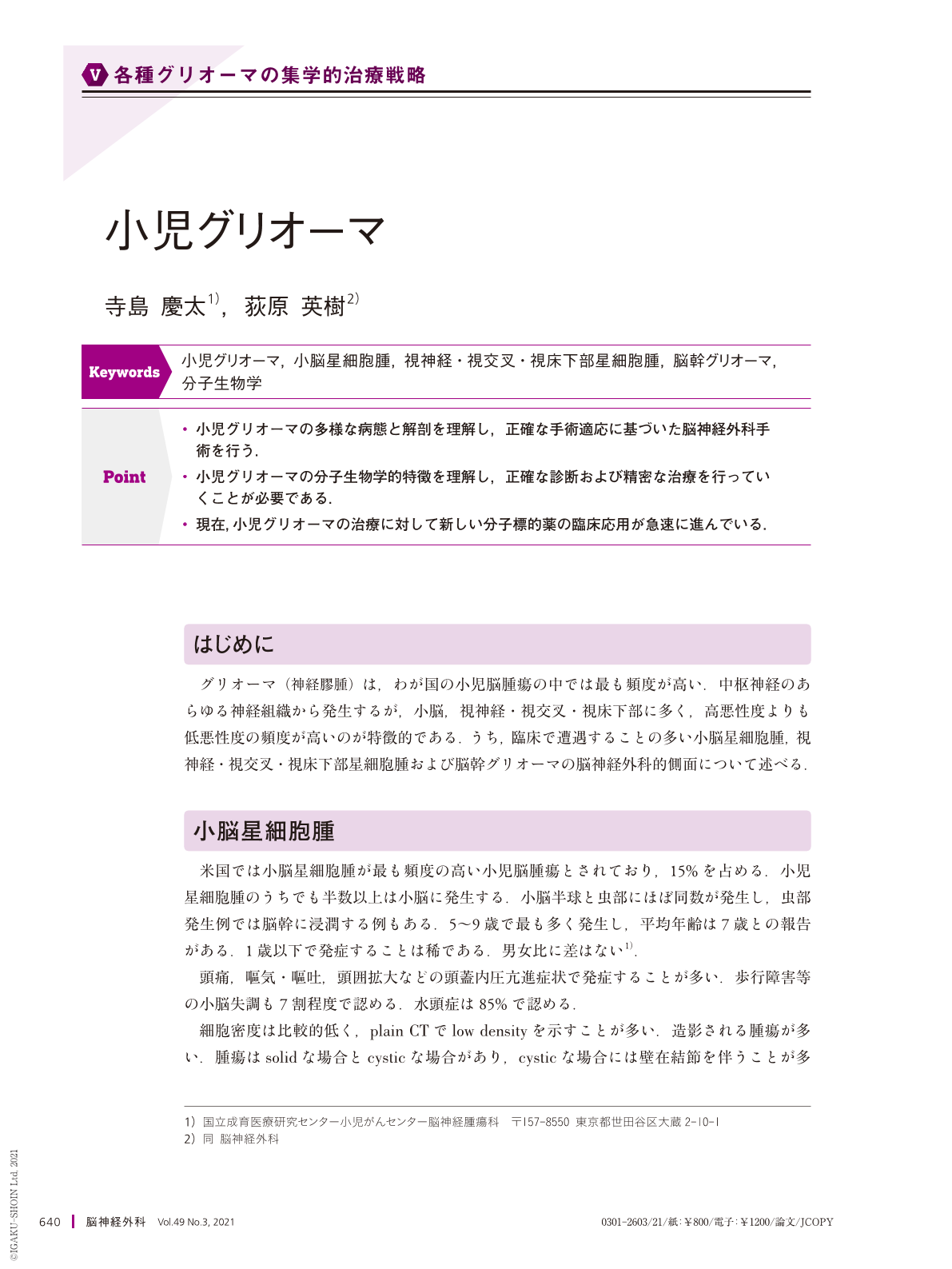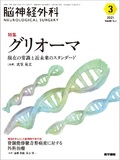Japanese
English
- 有料閲覧
- Abstract 文献概要
- 1ページ目 Look Inside
- 参考文献 Reference
Point
・小児グリオーマの多様な病態と解剖を理解し,正確な手術適応に基づいた脳神経外科手術を行う.
・小児グリオーマの分子生物学的特徴を理解し,正確な診断および精密な治療を行っていくことが必要である.
・現在,小児グリオーマの治療に対して新しい分子標的薬の臨床応用が急速に進んでいる.
Pediatric gliomas include various types of glioma broadly categorized as low- or hi-grade based on histopathological features. Clinically significant types include cerebellar astrocytomas, optic pathway / hypothalamic pilocytic astrocytomas, and brainstem gliomas. Neurosurgical roles vary for different kinds of pediatric gliomas. Since these representative tumors remain rare, the patients should be directed toward facilities with experienced neurosurgeons. Radiotherapy and chemotherapy are very important as either adjuvant or primary treatment modalities. Recent advancements in molecular biology have revealed unique genetic aberrations in different types of pediatric gliomas. The RAS/MAPK pathway anomalies, including BRAF-KIAA1549 fusion and BRAF V600E mutation, are present in most low-grade gliomas. BRAF/MEK-inhibitors have yielded promising clinical study results. Diffuse midline gliomas, including diffuse intrinsic pontine gliomas, often harbor H3 mutations such as H3K27M. Agents that target these molecular aberrations are unavailable. Because gliomas in infants are sub-categorized by their genetic abnormalities, novel agents targeting ALK, ROS1, or NTRK fusions are promising treatments.

Copyright © 2021, Igaku-Shoin Ltd. All rights reserved.


